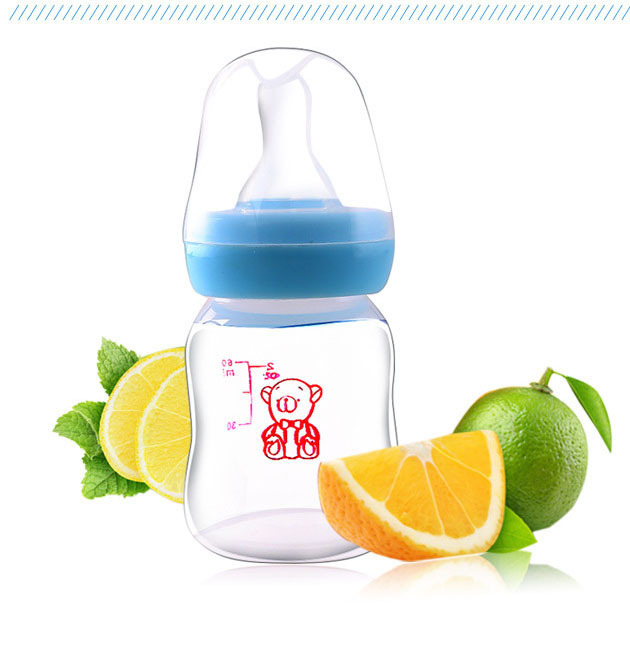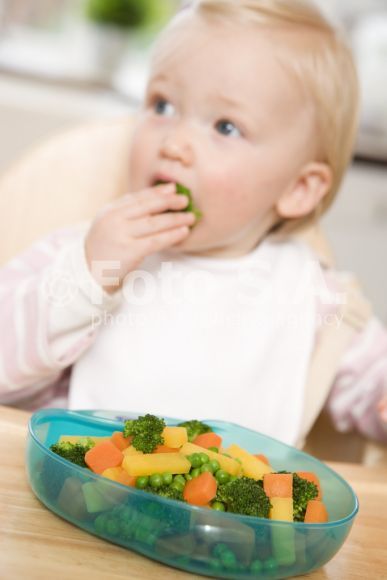Feeding baby juice
When Can Babies Drink Juice? Fruit Juice Guidelines for Babies – Happiest Baby
By Dr. Harvey Karp, MD, FAAP
Juice has traditionally been a widely accepted drink for babies and toddlers. However, the American Academy of Pediatrics (AAP) has released information and details on when your baby can drink juice. Due to the higher sugar levels and lack of nutritional contents of fruit juice (apple, orange, prune, etc), it’s best to follow the guidelines set forth by the AAP.
When can babies drink juice?
When can babies drink juice? The American Academy of Pediatrics (AAP) says it's best to wait until after your baby is 1 year old before giving them juice unless your doctor recommends it earlier for managing constipation. Growing concerns about increased rates of obesity and tooth decay prompted the change of when you could give babies juice from the previous recommendation of 6 months.
Apple Juice for Babies and Infants
When I was a young doctor, we thought apple juice was a great first drink for babies, but it turned out to be a bad idea. ..resulting in the early introduction of sugar addiction.
It turns out that fruit drinks and fruit juice (including apple juice) are the food equivalent of an "alternative fact." Actually, the "fruit" (the pulp and most nutritious parts of the fruit) is thrown away, leaving "juice" (pretty much just sugar and water). This includes apple juice, orange juice, and even prune juice.
Your baby is better off without juice in the early days!
What can babies drink if juice is out?
For the first 6 months, babies should only have breast milk or formula (it’s even better if you can breastfeed for a full year, per the AAP). But after you do wean, formula and water are the preferred drinks, until your baby’s first birthday. I also recommend offering non-caffeinated mint or chamomile sunshine tea. Just drop the tea bags in a pitcher of room temperature water and let it sit in the sun and self-brew for an hour. They are naturally sweet without sugar…and kids love them!
How much juice can toddlers and big kids drink?
After 1 year of age, pure 100% juice is OK as a special treat. Don’t think of it as a daily beverage for your little one to sip throughout the day. But that said, when you do give juice, AAP recommends you stay under the following daily limits:
Don’t think of it as a daily beverage for your little one to sip throughout the day. But that said, when you do give juice, AAP recommends you stay under the following daily limits:
- 4 oz. a day for 1 to 3-year-olds
- 4-6 oz. a day for 4 to 6-year-olds
- 8 oz. a day or 7-year-olds & up
So, if you were asking yourself the question “When can I give my baby juice?” Now you know! However, don’t let these juice restrictions confuse you about fruit—whole fruit is full of vitamins, minerals and dietary fiber. When you introduce solids to your baby, pureed and mashed fruit should be part of the mix.
About Dr. Harvey Karp
Dr. Harvey Karp, one of America’s most trusted pediatricians, is the founder of Happiest Baby and the inventor of the groundbreaking SNOO Smart Sleeper. After years of treating patients in Los Angeles, Dr. Karp vaulted to global prominence with the release of the bestselling Happiest Baby on the Block and Happiest Toddler on the Block. His celebrated books and videos have since become standard pediatric practice, translated into more than 20 languages and have helped millions of parents. Dr. Karp’s landmark methods, including the 5 S’s for soothing babies, guide parents to understand and nurture their children and relieve stressful issues, like new-parent exhaustion, infant crying, and toddler tantrums.
His celebrated books and videos have since become standard pediatric practice, translated into more than 20 languages and have helped millions of parents. Dr. Karp’s landmark methods, including the 5 S’s for soothing babies, guide parents to understand and nurture their children and relieve stressful issues, like new-parent exhaustion, infant crying, and toddler tantrums.
View more posts tagged, health & safety
Have questions about a Happiest Baby product? Our consultants would be happy to help! Connect with us at [email protected].
Disclaimer: The information on our site is NOT medical advice for any specific person or condition. It is only meant as general information. If you have any medical questions and concerns about your child or yourself, please contact your health provider.
How To Introduce Juice To Your Baby (Guidelines & Tips)
Giving juice to babies can be a controversial subject, and you may be wondering if it’s OK. And if it is OK for your baby to drink it, when are they old enough, and how do you introduce it?
And if it is OK for your baby to drink it, when are they old enough, and how do you introduce it?
We’ve talked to doctors, dentists, and parents and have heard all sides of the debate.
In this article, we’ll talk about whether juice is safe for babies and what kind of juice is best, when it’s safest to introduce juice, and how you can go about doing it. We’ll also discuss what to avoid when introducing juice to your baby.
Table of Contents
- When Can a Baby Have Juice?
- Tricks to Introducing Juice
- Homemade vs. Store-Bought
- What Should I Watch For?
When Can a Baby Have Juice?
Up until the age of 6 months, your baby’s diet should consist of only breast milk or formula. So, if your baby is younger than 6 months old, they are too young for juice — or water or solid foods, for that matter.
The AAP recommends that children under 12 months avoid juice altogether (1).
There are many reasons for this, including the fact that breast milk and formula provide babies with all the vitamins and nutrients they need. Your baby’s digestive system needs time to mature, and your baby will have a lower obesity risk if you avoid introducing solid food and other drinks at an early age (2). Exclusively breastfed babies will also have higher immunity.
On top of waiting 6 months to a year to introduce juice, you should also make sure your child is already eating solid foods. If you introduce juice before your baby gets vitamins and nutrients from solid foods, you risk them getting full from the juice and refusing formula and breast milk.
Remember, liquids like water and juice can fill a baby up without giving them any vital nutrients they need to grow and develop. If they do not get the nutrition they need, the risk of malnutrition, failure to thrive, and anemia goes up. These conditions can cause severe health and development issues.
These conditions can cause severe health and development issues.
Tricks to Introducing Juice
So, your baby is old enough to have juice. You’ve started them on solids and are confident your baby is getting enough vitamins and nutrients even if you introduce juice throughout the day. Great, we’re so excited for you!
But before you toss some orange juice in a cup and have at it, make sure to read through the following points to prepare yourself. Trust us, your sanity and your baby’s tummy will thank you.
1. Talk to Your Doctor
It’s always a good idea to check in and see what your doctor thinks to make a fully informed decision about when to introduce juice.
They might know something about your family’s history or your baby’s medical history that could make them want you to hold off a bit longer.
2. Treat It Just Like Food
Just as you introduce one new food at a time, you should also try one juice at a time as well. Start with single vegetable or fruit juices and work your way up to combinations.
Start with single vegetable or fruit juices and work your way up to combinations.
New recommendations state that it’s no longer necessary to wait two to three days after introducing a food before trying another. However, introducing one item at a time will make recognizing adverse reactions easier for you (3).
3. Treat Foods and Juices Separately
Grapes and grape juice are two very different things. The same goes for tomatoes and tomato juice.
Because of this, you should treat them as separates when introducing them to your baby. For example, you can try grapes out this morning and introduce grape juice tomorrow. This is just an extra measure to make sure you can identify any allergies your baby might develop.
4. Offer Juice Only With Meals
Juice can fill babies up, making them less likely to eat the things that will provide them with essential nutrients.
Offering it only at meals makes them less likely to chug it down and get full from the juice alone. Instead, they will get the needed vitamins and nutrients from the food on their plates.
Instead, they will get the needed vitamins and nutrients from the food on their plates.
5. Give Juice in a Cup Instead of a Bottle
Liquids from bottles will sit on your baby’s teeth longer than liquids from sippy cups (4). That is why dentists say you should avoid putting your child to bed with a bottle because the sugars in the liquid sitting on their teeth are likely to cause tooth decay.
If you are going to give your baby anything in a bottle, make sure it is not juice. The acid from juice is even worse than the sugar in milk, breaking down the enamel and causing decay faster than other liquids.
6. Limit the Amount
You should only give your baby 2 to 4 ounces of juice each day (5). Too much juice can not only make your baby feel full, but it can also lead to obesity and short stature in children and has been linked to failure to thrive (6). Juice should add a complementary flavor to your child’s diet and not be treated as a substitute for what they need.
7. Don’t Forget To Dilute
Diluting juice is important both because of its sugar content and its acidity. To help prevent tooth decay and tummy issues, dentists and doctors recommended you dilute juice to a 50/50 ratio with water.
Homemade vs. Store-Bought
Homemade is always best for your baby, right? I mean, it’s packed full of vitamins and nutrients, after all. But hold your horses; it’s a little more complicated than that.
While juice made from raw fruits and vegetables does provide vitamins and nutrients, it should not be allowed to touch your baby’s lips. Why, you ask? Because along with the vitamins and nutrients that come with raw produce, there are quite a few bacteria that come with it.
Unless juice is pasteurized properly, something that is hard to do at home, it can be dangerous to your baby.
Pasteurization is the process of killing bacteria by heating it to a specific temperature for a certain amount of time. Unpasteurized juice can contain higher numbers of bacteria, such as E. coli, Cryptosporidium, Salmonella, and Norovirus (7).
coli, Cryptosporidium, Salmonella, and Norovirus (7).
These bacteria have been known to cause symptoms such as:
- Diarrhea.
- Vomiting.
- Fever.
- Chills.
- Bloody stools.
- Weight loss.
- Dehydration.
- Lack of appetite.
While older children and adults can usually handle the bacteria that lies in raw fruit juices, your baby’s small tummy will have a harder time. Any or all of these symptoms can be harmful to your baby. In severe cases, these bacteria can cause acute kidney failure, seizures, and even death (8).
Instead of making juice for your baby at home, where you cannot assure it is pasteurized properly, it’s best to head to the grocery store when choosing juice for your baby. Pick a 100% fruit or vegetable juice with no extra sugar or additives.
If you insist on making your baby’s juice at home, make it out of fruits and vegetables that have been boiled or steamed before juicing them, to kill off as much bacteria as possible.
The same issues can occur when feeding your baby raw vegetables, and especially fruits, which is why many doctors recommend cooking all fruits until your baby is 8 months old (9).
What Should I Watch For?
We hope your baby’s tummy enjoys the flavors of juice without any troubles, but sometimes things can happen.
Here are some signs to look out for when introducing juice to your little one:
1. Loss of Appetite
Juice can make babies feel full without giving them the nutrients they need to grow and thrive. If juice makes your baby feel full, they can start to refuse the breast milk, formula, and food they need to grow and thrive.
2. Diarrhea
If the juice is not diluted correctly, the excess sugar can be tough on your baby’s tummy. One of the symptoms of juice that is too strong is diarrhea.
While making your baby poop can be a good thing in some cases, like when doctors recommend prune or pear juice if a baby is constipated, diarrhea could ultimately lead to dehydration.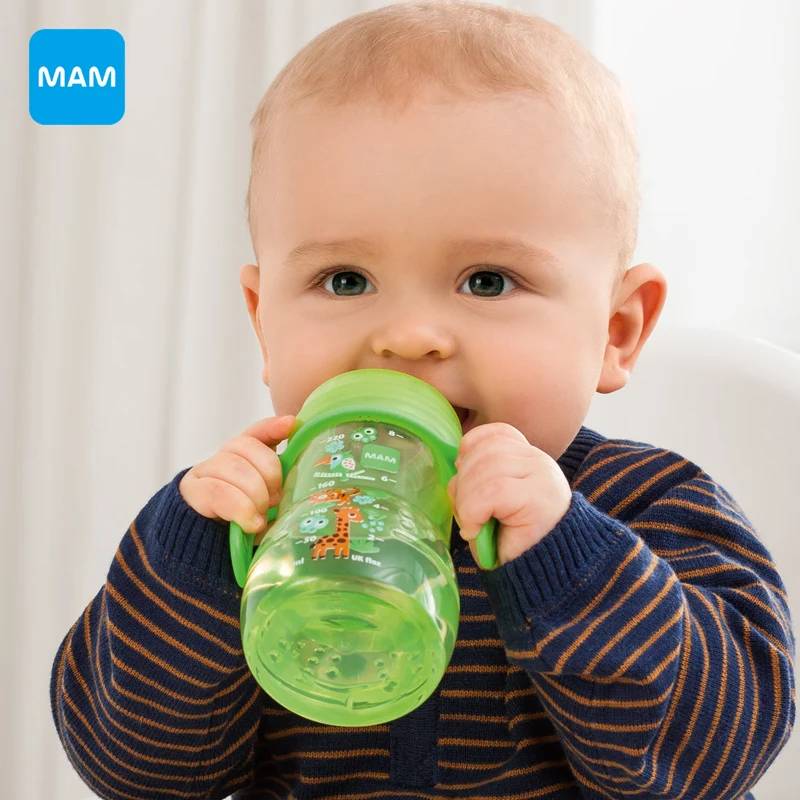
3. Tooth Decay
We mentioned earlier in this post that fruit juice contains a lot of acids and sugar. Both of these can be bad for your baby’s teeth. Even if you give your baby their juice in a sippy cup, it can still sit on their teeth and lead to tooth decay.
If left untreated, this can be painful and take extensive treatments to fix, including pulling out your baby’s teeth.
Watch Out For Imposters
Juice “drinks,” such as “apple beverage” or “Tang” are not juice. While they might be sold in the same aisle and look the same in the bottle, juice drinks can be comprised of as little as 10% juice, meaning they have even fewer benefits for your baby.
4. Gas and Stomach Pains
Babies have an immature digestive tract that makes it harder for them to break down sugars. Undiluted fruit juice, or juices that contain high fructose corn syrup, might cause your baby to experience gas and stomach pains when their body tries to break down the sugars.
Any of these problems can cause pain and discomfort for your baby.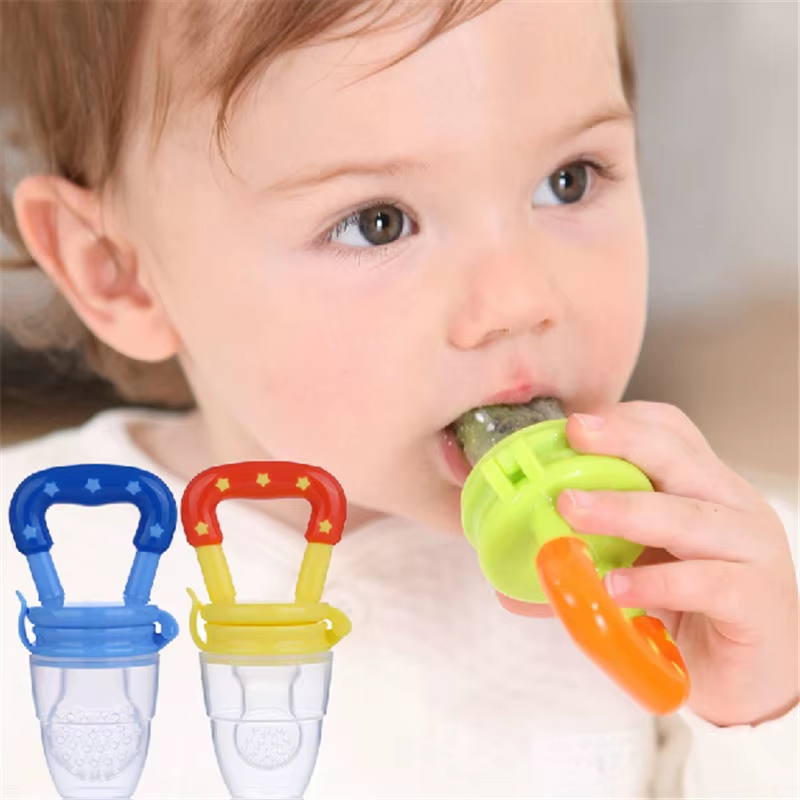 If your baby starts to experience any of these symptoms, it might be a good idea to hold off on the juice for a while and give your baby’s tummy time to settle down.
If your baby starts to experience any of these symptoms, it might be a good idea to hold off on the juice for a while and give your baby’s tummy time to settle down.
If you don’t take this step, the problems can worsen and possibly lead to anemia, malnutrition, failure to thrive, and obesity.
Feedback: Was This Article Helpful?
Thank You For Your Feedback!
Thank You For Your Feedback!
What Did You Like?
What Went Wrong?
When can I give juice to a baby? Expert advice
April 26, 2019
Author: Pampik
When can I give juice to a baby? What juices can be given to children under one year old? At what age can juice be given to children? You will find answers to these questions in the article on the blog of the children's online store Pampik.com.
The first feeding of the baby is an important step in the development of the baby
Many parents are concerned about the time when they can start giving the first complementary foods. Another important knowledge is what exactly is included in this first complementary food. The problem is mainly that the advice contradicts itself. More recently, it was believed that juice should be given almost immediately, from the first days of life. And, accordingly, our mothers, following the guidance of Soviet pediatricians, gave us juice. Everything would be fine, but later it turned out that most people with such a diet have stomach problems in adulthood. So it's really not possible. This advice, alas, is hopelessly outdated by several generations.
Another important knowledge is what exactly is included in this first complementary food. The problem is mainly that the advice contradicts itself. More recently, it was believed that juice should be given almost immediately, from the first days of life. And, accordingly, our mothers, following the guidance of Soviet pediatricians, gave us juice. Everything would be fine, but later it turned out that most people with such a diet have stomach problems in adulthood. So it's really not possible. This advice, alas, is hopelessly outdated by several generations.
The best first food is porridge. Porridge is followed by single-component vegetable purees, then multi-component purees, then meat and fish. And after the child confidently eats mashed potatoes - that is, starting from four months, or even more, you can give juice.
Should I give juice to my baby? Is it too allergenic for the baby?
Of course, juices are a great variety for a children's menu. They are tasty, they are healthy, they introduce kids to new tastes and have a lot of vitamins. Moreover - since they are liquid, they are much easier to introduce into the diet.
Moreover - since they are liquid, they are much easier to introduce into the diet.
But there are also disadvantages. Yes, juices can and should be administered up to a year, but not earlier than six months. In principle, the later, the better, to some extent. There is no particular controversy about this. Starting from six months, the child's gastrointestinal tract is properly formed. Babies over six months old can safely digest foods other than breast milk or infant formula. If you enter the juice earlier, a variety of unpleasant consequences are possible: from allergies to indigestion. Therefore, when introducing juices, you should follow the recommendations of the pediatrician and take your time.
Juicy variety: what juice flavors are best for a child?
Of course, there are fruit and vegetable juices. Carrot, tomato and pumpkin are confidently leading among vegetable juices. True, with vegetable juices it is usually wildly difficult. Finding a pumpkin even among juices for adults is not very realistic.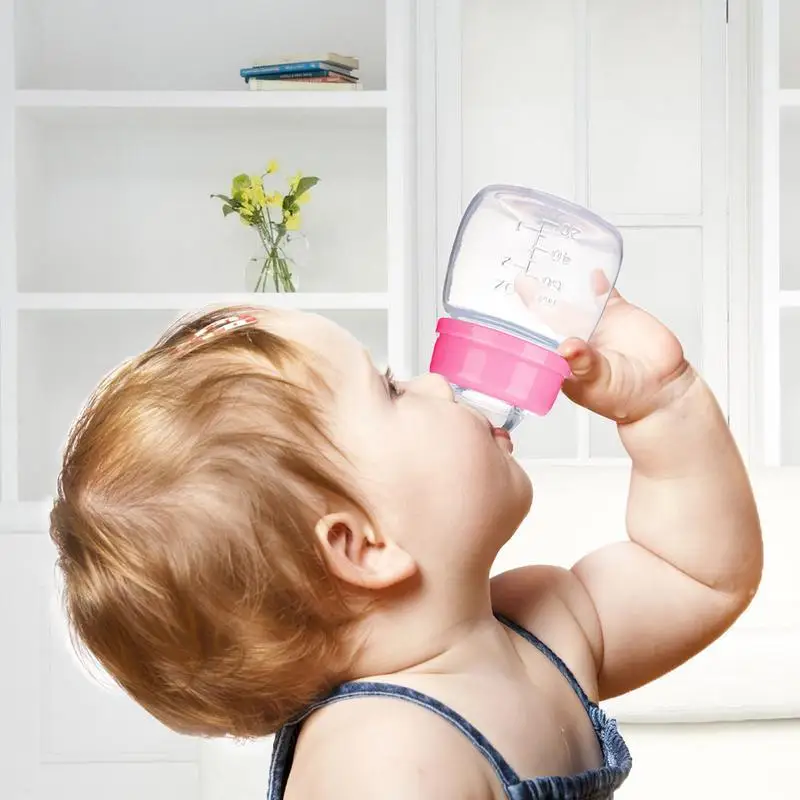 Carrots are simpler, even in a single-component form, a tomato is even simpler. Among juices for adults, of course, you can also find beetroot juice. But it is most similar to borscht, and it is too early to give it to a child. Even if the baby is already eating beetroot.
Carrots are simpler, even in a single-component form, a tomato is even simpler. Among juices for adults, of course, you can also find beetroot juice. But it is most similar to borscht, and it is too early to give it to a child. Even if the baby is already eating beetroot.
But in addition, they are also divided into juices with pulp and clarified. Most parents perfectly imagine what juices with pulp are - at least in their school days. But, despite the appearance, juices with pulp are also more useful. Each juice is a source of vitamins.
Traditionally, the introduction of juice begins with clarified apple juice. It is the least allergenic among all. If you look at the vitamins, then each type of juice contains useful substances. Let's take a closer look:
- Apple. Apple juice, in addition to better digestibility, contains iron and vitamin C. A big plus of vitamin C is that it helps develop immunity. In turn, this reduces the possibility of catching a whole host of unpleasant infections, ranging from colds to sore throats.
 In addition to the apple, pomegranate and kiwi also contain iron. But neither one nor the other to give the child in the near future is undesirable.
In addition to the apple, pomegranate and kiwi also contain iron. But neither one nor the other to give the child in the near future is undesirable. - Apricot and peach juices. They contain beta-carotene, just like carrots. But if carrots are not to the taste of all children, then fruit juices are much tastier. Beta-carotene affects hair growth, strong bones, healthy teeth and gums. By the way, peach and apricot can be replaced with pumpkin juice. And if mom or baby is a fan of Harry Potter, drinking juice becomes much more interesting. You can not only try to nurture an interest in juice in a child, but also say that they drink this juice at the school of magic, and grow up to be strong and beautiful wizards. Even if the child is too small to understand, it never hurts to cheer yourself up. Apricots also contain potassium, which is responsible for the proper functioning of the cardiovascular system.
- Pumpkin. In addition to beta-carotene, it also pleases with B vitamins.
 They are responsible for the proper development of the body and the functioning of the circulatory, respiratory and nervous systems.
They are responsible for the proper development of the body and the functioning of the circulatory, respiratory and nervous systems.
It should also be taken into account that some juices can also affect the functioning of the stomach. For example, the same pomegranate and pear juices save from loose stools. But apricot, peach and plum successfully fight constipation. The same, by the way, applies to fruits of the same name, so be vigilant and careful.
In line! The order of introducing juices into complementary foods
Of course, in relation to juices, another question arises - when to introduce, and in what order. The first step is to consult a pediatrician. Babies drink exclusively mother's milk or formula. The newborn can be fed only milk or, if the infant is lactose intolerant, a lactose-free formula. No need to try to dilute the mixture with juice - this will not lead to anything good.
As already mentioned, it is better to start with clarified apple juice. Immediately after the apple, you can enter the apple with pulp. In general, any juices with pulp should be administered only after clarified ones. So the chance of getting an allergy or indigestion is much less.
Immediately after the apple, you can enter the apple with pulp. In general, any juices with pulp should be administered only after clarified ones. So the chance of getting an allergy or indigestion is much less.
The further order of the queue is simple:
- Following the apple, you can enter the juice of a plum, banana, pear or prunes. You can choose the order according to your taste. The only caveat is that only one juice should be introduced in one day. Then you need to wait a bit - what will be the reaction of the child. If the baby gives out an absolutely normal reaction, do not rush to immediately give the baby the next look. Wait a while. Naturally, juices already introduced into the diet can be given without problems. But only between feedings, observing the interval. Also, do not give several juices at once. Another important nuance is that when giving juice to a child, you need to start with a small spoon. If everything is good, you can increase the amount, if not, you need to slow down.

- Berry juices are next. It can be blackcurrant, strawberry, raspberry. As with the previous ones, you first need to enter the juices one at a time. If there is no allergy - you can continue. A mixture of juices in this case is dangerous only because if an allergy starts, it is difficult to understand which particular component caused it.
- Last but not least, you can enter juices from citrus fruits and any other fruits that do not grow in your latitudes. This usually happens after the child is one year old. Naturally, if you do not live in Ukraine, but, for example, in Israel, then the procedure for introducing juices will be completely different. Of course, if your pregnancy also took place in Israel.
- Grape juice is an exception. It should be administered no earlier than five or even six years, because it wanders slightly, and periodically does this in the stomach.
Recommendations for the introduction of juices
Although most parents use the services of pediatricians, young mothers and fathers can simply forget about some questions. Especially if the child is the first. Therefore, Pampik.com provides useful tips. By reading the blog, you will find out what else is worth paying attention to.
Especially if the child is the first. Therefore, Pampik.com provides useful tips. By reading the blog, you will find out what else is worth paying attention to.
So, what do we recommend for the introduction of juices:
- Do not give your baby more than the amount of juice recommended by the pediatrician. Even if he asks. The fact is that getting used to new varieties of food should occur gradually. Here it is important to observe the exact dosage and increase the amount little by little.
- Despite the many recommendations on the sites, let's juice undiluted. If you buy a special children's juice, the vitamins and nutrients in it are balanced. When juice is diluted with water, most of the nutrients are lost. And the possibility of an allergy does not disappear.
- It is not necessary to give the crumbs juice intended for adults or squeezed out by oneself. Such juices do not have a balanced composition; often they are acidic. And the original product is not a fact that is really suitable for the baby.
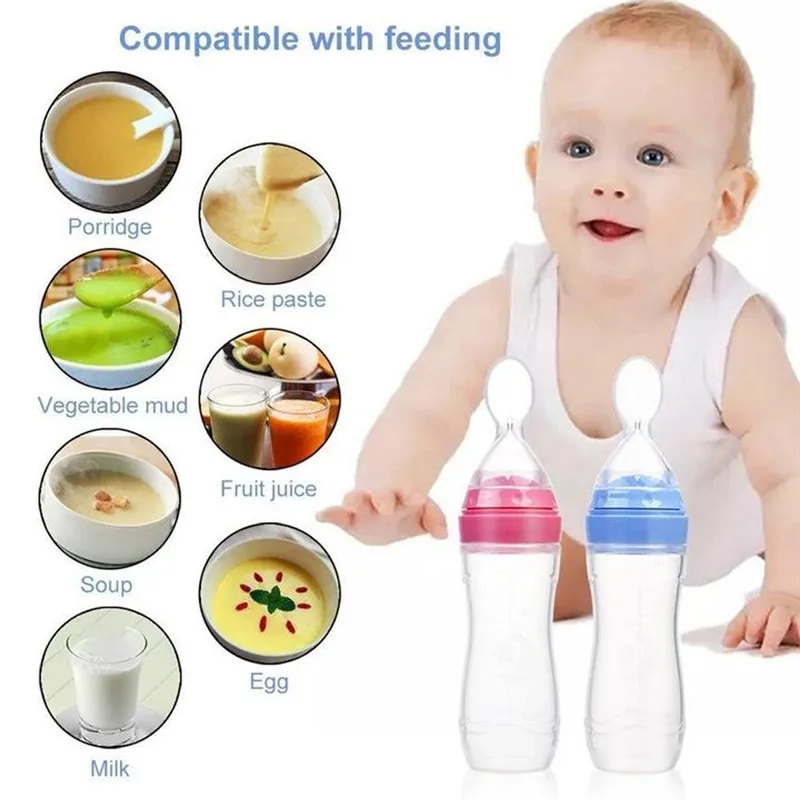 When you buy juice specially made for children, you know for sure that every step in the production of the product is under strict control. Both the original raw materials and the production process, along with sterility, are monitored.
When you buy juice specially made for children, you know for sure that every step in the production of the product is under strict control. Both the original raw materials and the production process, along with sterility, are monitored. - Tracking allergies and other strange reactions is easy. Pay attention to the behavior of the child, to his stool, and to the skin. If rashes appeared on the skin, something went wrong.
- Juice must not be introduced before you have introduced the first complementary food. If you are thinking about how to introduce complementary foods, and how to accurately determine the timing of the introduction of complementary foods, everything is simple.
The first weaning is a rather simple thing. If the child stops getting enough milk or formula, his weight almost doubles, he confidently sits on a chair and tries to steal a piece of food from under your nose - he is ready.
Rating of juices: what you can choose
If you buy juices in bulk, immediately calculate how much you need per month. And, of course, in this case, the Pampik online store will come to your aid.
And, of course, in this case, the Pampik online store will come to your aid.
So what can you choose from?
- Hipp. A company that almost everyone knows about. The price of this juice is not cheap, but the Hungarian manufacturer promises low allergenicity and a completely organic product. Sold in small glass jars of 200 ml. Among the most common options you can find apple, carrot, plum, as well as various apple-fruit mixtures.
- Sadochok. These juices are enjoyed by many Ukrainian children and adults. Sold both individually and in small packs of 5-6 pieces. In the line of juices, you can find almost any taste of Ukrainian fruits. Most often, apple and derivatives are found in stores.
- Agusha. There are small tetrapacks and a very favorable price. True, the line of flavors is rather strange: from pure juices, it is easiest to find only apple and pear. Everything else, alas, is a mixture with the same apple, such as an apple-peach or an apple-banana.

- Bambolina. This is a Belarusian company, which is distinguished, first of all, by a variety of tastes. Juices mostly with pulp, packaging - 200 ml tetra packs. But among the flavors you can find an apple with blueberries, an apple with blueberries, an apple with rose hips - and much more.
- Miracle Child. Another popular juice brand. It is produced by the Odessa plant, in the abbreviation OKZD. The juice is supplied in 0.2 liter tetra packs, and almost all of it contains pulp. But in the line, both fruit and vegetable flavors coexist.
- Fleur Alpine, The Netherlands. This brand claims that its juices are hypoallergenic. At the moment, a jar of juice from Fleur Alpin is the most expensive in Ukraine. There are few flavors, some are mixed, but in general this is one of the most interesting lines.
- Spoon in the palm of your hand. Another Belarusian brand in tetra packs. Tastes are standard, price is average.
- Peanut.
 Quite an interesting flavor line; you can even find a pumpkin. And it's not so easy for adult juices. Packed in a tetrapack, there are both pure juices and pulp. The cost is very affordable.
Quite an interesting flavor line; you can even find a pumpkin. And it's not so easy for adult juices. Packed in a tetrapack, there are both pure juices and pulp. The cost is very affordable.
- Bebivita. Another Hungarian company. It costs less than Hipp, it is sold in jars in the same way. Among the flavors stand out apple, peach and a mixture of apple and pear.
- Marmaluzi. Lithuanian brand, very cozy design, reminiscent of grandmother's fairy tale jam. The shelf life of an open jar is one day. The line of flavors contains an apple and a lot of apple-berry mixtures. For example, apple-sea buckthorn or apple with chokeberry.
- Gerber, Poland. Tastes are included in the basic complementary foods with juices. The cost is quite low, in the line there are also vegetable flavors.
Always consult your pediatrician before drinking any juice, regardless of brand. Some juices are recommended to be taken from four months, some - from six. Some packages may have a shelf life of more than five months. But only a pediatrician can give you the final confirmation.
Some packages may have a shelf life of more than five months. But only a pediatrician can give you the final confirmation.
Bon appetit! Your Pampik :)
by category
- Article 274
- Test drive 5
- Review 42
by topics
- Pregnancy, childbirth and motherhood 80
- Baby Care 86
- Toys and early development 73
- Baby feeding 43
- Children's room and safety 39
Newsletter
Only fresh and interesting
News for you!
Followers:
20,000+
subscribers
Our YouTube channel
Which juices are suitable for a child
The author of the article Pyrieva Catherine Anatolievna
305909 views
October 05, 2022
Login or register to save articles and products to your favorites
When a baby is just born, its fluid needs are fully met by breast milk or infant formula diluted in the correct proportion. But now your baby has already grown up, and it seems to you that it is time to introduce him to new, healthy and tasty drinks.
But now your baby has already grown up, and it seems to you that it is time to introduce him to new, healthy and tasty drinks.
Expert opinion
When is it time to invite your baby to try the juice?
We asked the candidate of medical sciences, nutritionist Pyrieva Ekaterina Anatolyevna about this.
- The scheme and timing of the introduction of complementary foods should be discussed with the doctor who observes the child and knows his individual characteristics of development and health status. According to general recommendations, it is permissible to introduce fruit juices into the diet of a child closer to the second half of the year of life, but everything is very individual! At the same time, the type of feeding on which the child is (breast or artificial) does not play a key role.
Which is safer: homemade juices or industrial juices?
— Of course, industrial juices for baby food are distinguished by a guaranteed composition, chemical and microbiological safety, therefore their use in baby food is preferable to home-made juices.
Which juices are offered to babies first?
- Usually, the first juices that a child gets acquainted with are hypoallergenic monocomponent juices of industrial production - apple or pear. But the scheme and timing of the introduction of complementary foods should still be discussed with the doctor who observes the child and knows his individual characteristics of development and health status. As a rule, in our country, the first juices that a baby gets acquainted with are single-component clarified juices from apples or pears.
How much juice can be given to a child under one year old?
- Each complementary food product has its own norms of permissible daily volumes. For juices, the allowable daily volume is quite simple to calculate: the child's age in months must be multiplied by 10 - you get the daily volume of juice in ml (but not more than 100 ml). For example, at 6 months the volume of juice per day is 60 ml, at 8 months - 80 ml, at 10-12 months - 100 ml. These volumes should not be exceeded.
These volumes should not be exceeded.
Do commercially produced baby juices, nectars and other drinks contain added sugar?
— There is no added sugar in FrutoNyanya juices. And in children's nectars and drinks, the content of added sugar is strictly regulated. It is not recommended to sweeten ready-made baby food products. Fruit juices contain fructose, a fast carbohydrate that is a source of energy for children and adults. Toddlers grow and actively learn about the world around them, so they especially need such “fuel”.
Can industrial juice be diluted with water to make it less sweet? What is the best way to heat juice if it is cold?
- It is not recommended to dilute ready-made juices with water. And if you want to warm the juice for the baby, it is better to do it not in the microwave, but in a water bath.
Is it possible to give juices at night, after brushing your teeth?
- Products containing acids (juice, kefir) are not recommended for children at night: dentists note the negative impact of this practice on the condition of the child's teeth.